20 Famous Female Authors who Changed the World
1. Agatha Christie

Photograph of the English novelist Agatha Christie Photo by Joop van Bilsen Wikimedia Commons
Dame Agatha Mary Clarissa Christie, Lady Mallowan, DBE was born on 15 September 1890 in Torquay, United Kingdom. She was an English author best known for her 66 detective novels and 14 short story collections.
Detective crime writer Dame Agatha Christie is recognized by the Guinness World Records as the best-selling fiction writer of all time, with her novels having sold more than two billion copies around the world.
She is best known for creating the fictional detectives Hercule Poirot and Miss Marple, but she also wrote the longest-running play in the West End, The Mousetrap, which has been running since 1952.
She was born into a wealthy upper-middle-class family in Devon and later moved to Wallingford, Oxfordshire, with her husband, where she died at the age of 85.
Christie’s works are still popular among detective fiction fans and several of her works have been adapted for television and film.
Her most famous works are:
Murder on the Orient Express (1934) – Snowfall causes the Orient Express to come to a halt on Poirot’s way home from the Middle East. When a murder is discovered, detective Poirot is forced to solve it.
The A.B.C. Murders (1936) – In this film, crime detective Poirot, Arthur Hastings, and Chief Inspector Japp are forced to deal with a series of murders committed by a mysterious murderer known only as “A.B.C.”
The Mousetrap (1952) – The longest-running West End show, this murder mystery play was written for Queen Mary, the consort of King George V, as a birthday present.
2. Harper Lee
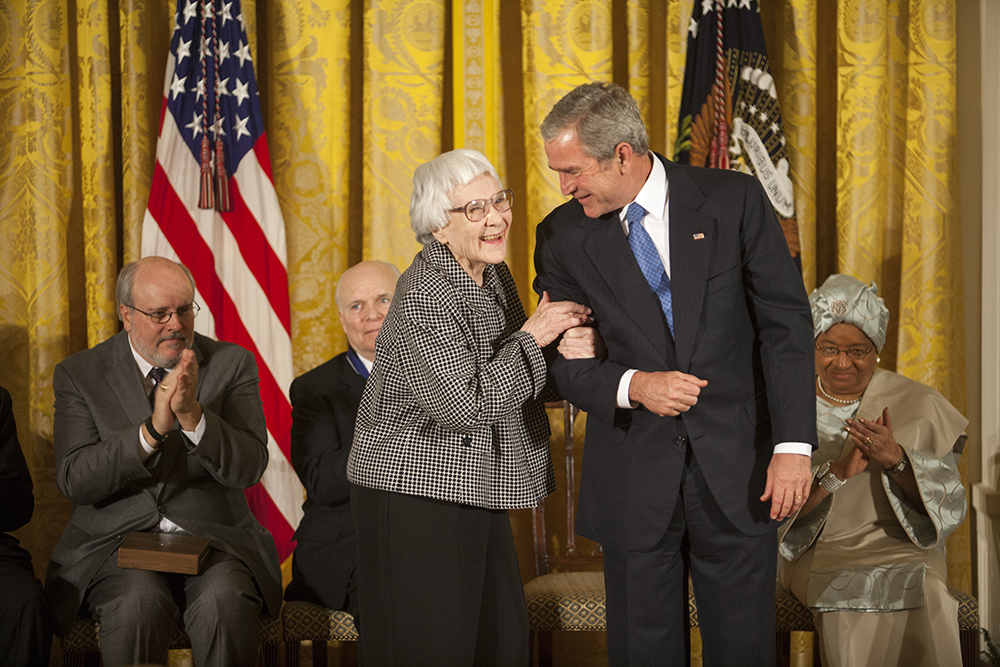
President George W. Bush awards the Presidential Medal of Freedom to author Harper Lee Photo by Eric Draper Wikimedia Commons
Harper Lee was a Pulitzer Prize-winning novelist best known for her 1960 novel To Kill a Mockingbird. The book went on to win her the Nobel Prize in 1961, propelling her to literary success as an acclaimed author.
Lee’s novel was inspired by her childhood in Monroeville, Alabama. From 1926 to 1938, her father, a former newspaper editor, businessman, and lawyer served in the Alabama State Legislature. He defended two black men accused of murdering a white storekeeper during his time in this position. Both men were found guilty of the crime and hanged, laying the groundwork for Harper Lee’s famous novel.
Lee has received numerous awards and honorary degrees as a result of the book’s widespread success, including the Goodreads Choice Awards Best Fiction in 2015 and the Presidential Medal of Freedom in 2007 for her contributions to literature.
Today, Harper Lee’s works are widely taught in schools in the United States, encouraging students to learn more about how to empathize with tolerance and dissipate prejudice toward others. British librarians even ranked the novel ahead of the Bible in 2006, calling it a novel that “every adult should read before they die.”
Harper Lee’s well-known works include:
To Kill a Mockingbird (1960) – A novel about justice that addresses serious issues such as rape and racial inequality. Based loosely on Lee’s observations of an event near her hometown.
Go Set a Watchman (2015) – The second of only two novels published by Harper Lee. Go Set a Watchman was originally published as a sequel to To Kill a Mockingbird, but it is now widely accepted that it was a first draft of the aforementioned book, with parallels to the original plot.
3. Jane Austen

Jane Austen, from A Memoir of Jane Austen (1870) Photo by Cassandra Austen Wikimedia Commons
Jane Austen, an English novelist, is one of the most well-known 18th-century novelists, best known for her six major novels. One of the earliest female writers to produce works that critiqued and commented on the British landed gentry, Austen was a writer who focused on plots that explored the dependence of women on marriage, or women who were in the pursuit of economic security.
As a result, many of Austen’s works were published anonymously, and she achieved little fame during her lifetime. She rose to prominence as a writer after her death, with her six full-length novels rarely going out of print. Her works have also been adapted for film, and a number of critical essays and anthologies have been published.
Among her most well-known works are Sense and Sensibility (1811) – First published anonymously by ‘A Lady,’ it tells the story of the Dashwood sisters, Elinor and Marianne, as they reach adulthood and are forced to leave the estate where they grew up with their widowed mother.
Pride and Prejudice (1813) – A novel following the character Elizabeth Bennet, who learns about the repercussions of hasty decision-making and the difference between superficial goodness and actual goodness.
Emma (1815) – A comedy of manners about the concerns of genteel women in Georgian-Regency England, focusing on marriage, sex, age, and social status.
4. Louisa May Alcott
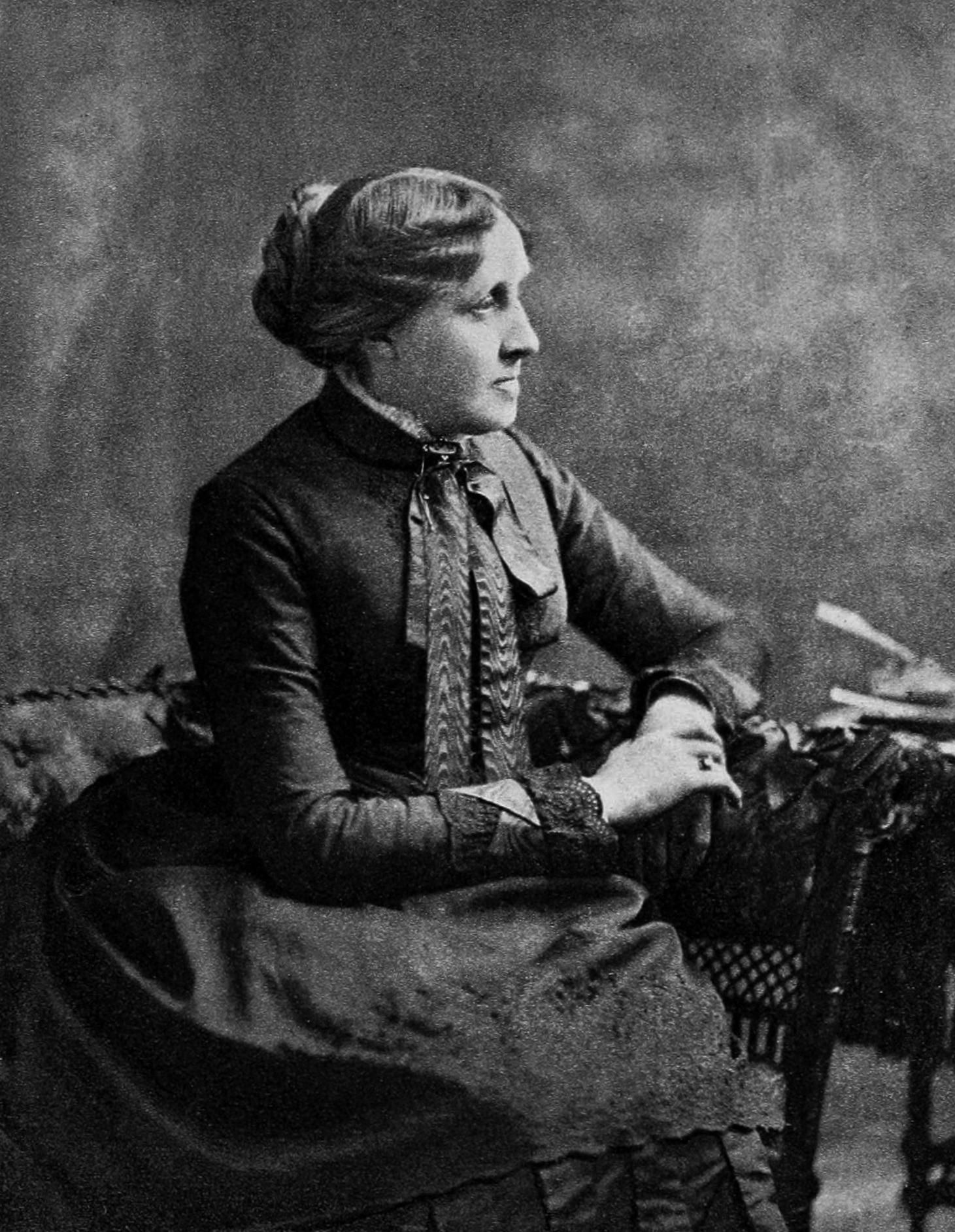
Louisa May Alcott Photo by http://www.gutenberg.org/dirs/1/2/0/8/12081/12081-h/images/c7alcott.jpg Wikimedia Commons
Louisa May Alcott, an American novelist, short story writer, and poet, is best known as the author of Little Women, but she has made a much more significant literary contribution than you might think. Alcott was one of four daughters raised in New England by her parents, Abigail and Amos. Alcott worked hard to support her family’s struggling financial situation, just like the four sisters in her famous novel, and used writing as an outlet when she had the time.
Little Women was her first major literary success, after having written for the Atlantic Monthly in 1860. In the early 1860s, she also attempted to break into the literary scene by publishing a number of gruesome short stories for adults under the pen name A. M. Barnard.
After becoming a household name with her debut novel, Alcott became an active member of various abolitionist and feminist reform movements, including working for women’s suffrage, which she supported until her death in 1888.
Famous works by Louisa May Alcott include:
Moods (1864) – Alcott’s first novel, which tells the story of Sylvia Yule, a passionate tomboy who goes camping with her brother and his two friends, both of whom fall in love with her.
Little Women (1868) – A coming-of-age novel about four sisters and their transition from genteel poverty as children to womanhood.
Little Men (1871) – A sequel to Louisa May Alcott’s famous Little Women, featuring the original’s characters – Jo Bhaer, her husband, and the various children at Plumfield Estate School.
5. Mary Shelley

Portrait of Mary Shelley Photo by National Portrait Gallery Wikimedia Commons
Mary Shelley, the famous Gothic fiction writer, comes in second on our list of famous female writers in history. She was a prominent editor, primarily for her husband, the Romantic poet, and philosopher Robert Bysshe Shelley.
Shelley was raised solely by her father after the death of her mother, who was the daughter of political philosopher William Godwin and feminist activist Mary Wollstonecraft. Shelley married young and dedicated her life to promoting her husband’s works, as well as writing fiction, after receiving a rich but informal education from her father, who promoted an anarchist lifestyle.
Her famous works include:
Frankenstein; or, The Modern Prometheus (1818) – Written when Shelley was only 18 years old, the story follows young scientist Victor Frankenstein who accidentally creates a sapient creature during an unconventional experiment.
Valperga (1823) – A historical novel set during the Guelph and Ghibelline wars that retells the adventures of Castruccio Castracani, a real historical figure who became Lord of Lucca and conquered Florence, Italy.
Rambles in Germany and Italy (1844) – A two-volume travel narrative about two European trips Shelley took with her son, Percy, and several of his university friends.
6. Emily Brontë
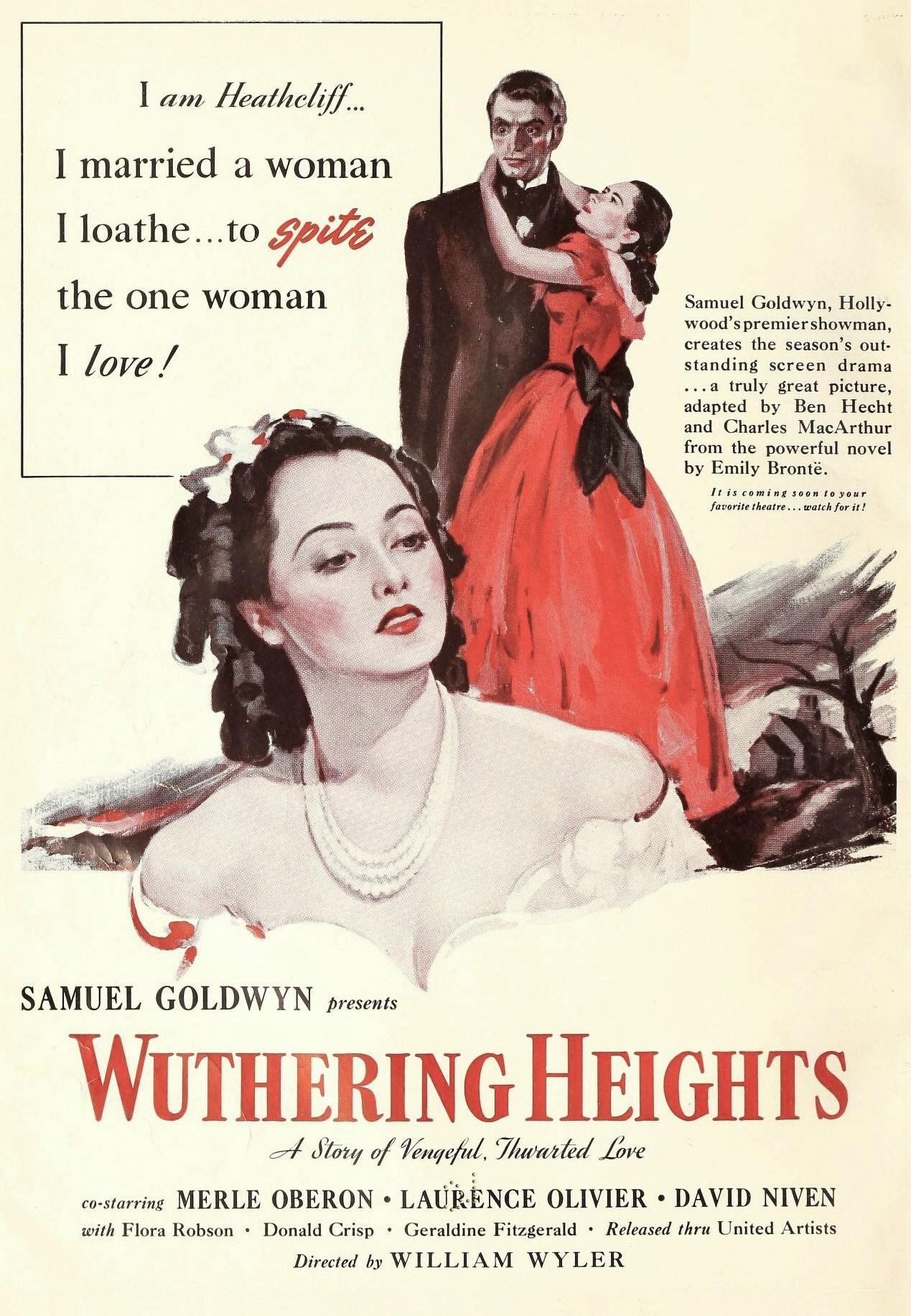
Poster for 1939 film Wuthering Heights Photo by Screenland, May 1939 Wikimedia Commons
Emily Bront, Charlotte Bront’s sister, was another famous female Victorian writer best known for her only novel, Wuthering Heights (which also appears on our list of classic books to read for students!)
Bront was also a prolific poet, publishing her work under the pen name Ellis Bell, and her writing was and still is regarded as ‘genius’ at the time. Poems by Currer, Ellis, and Acton Bell, her most famous collection of works, was a collection of pieces published under the pseudonyms of her sisters Charlotte and Anne.
Emily Brontë’s famous works include:
Poems by Currer Ellis and Acton Bell (1846) – A volume of poetry published collaboratively by the three Bront sisters, Charlotte, Emily, and Anne. It was their first piece of work to appear in print.
Wuthering Heights (1847) – A major influence on Romantic and Gothic fiction about two landed gentry families living on the West Yorkshire moors – the Earnshaws and the Lintons – and their turbulent relationships with Earnshaw’s adopted son, Heathcliff.
7. Charlotte Brontë
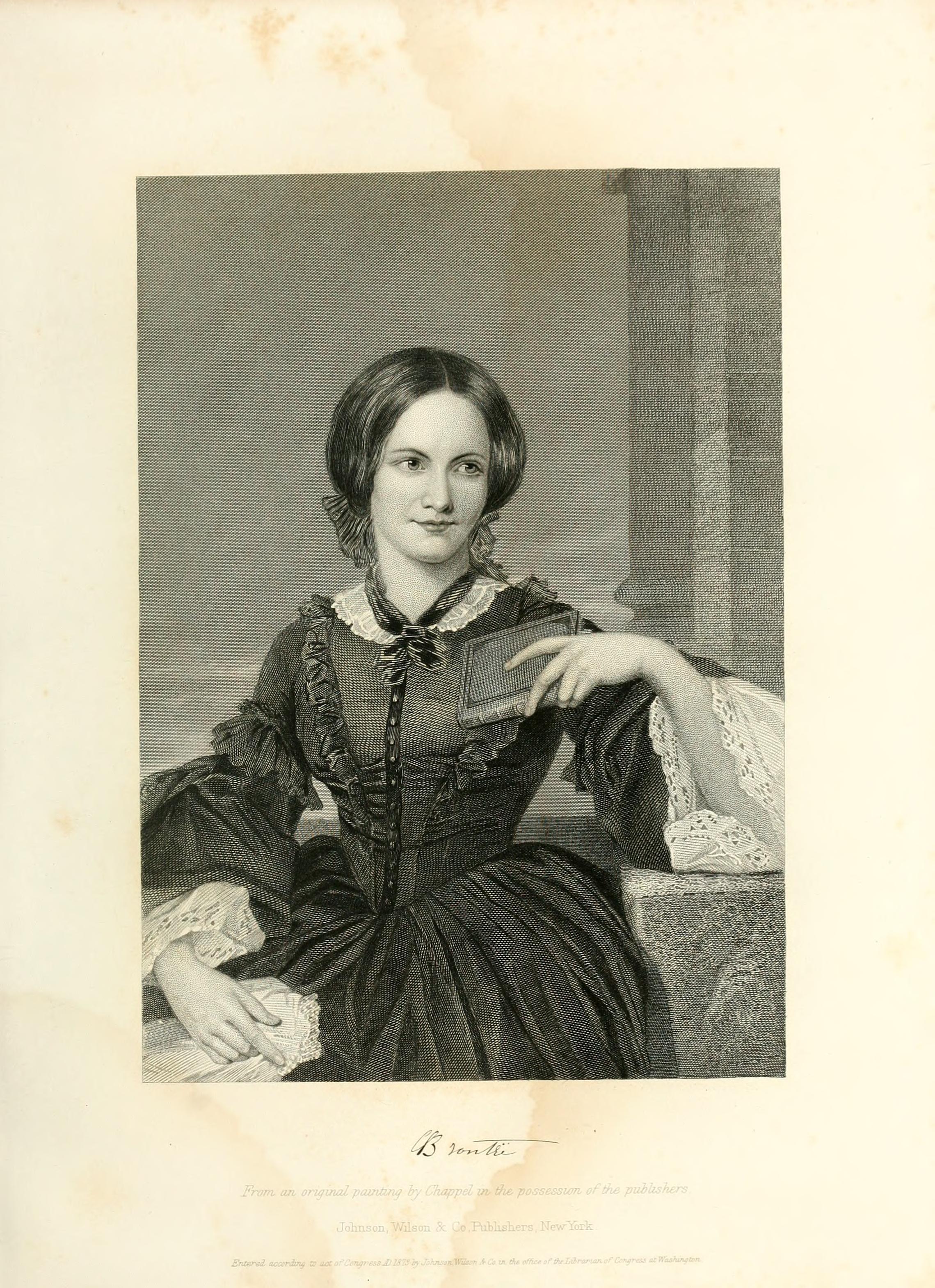
Portrait de Charlotte Bronte par Alonzo Chappel Photo by Alonzo Chappel Wikimedia Commons
Charlotte Brontë, one of the most famous Victorian female writers in history, is best known for her novels, including Jane Eyre (1847). She was the eldest of three sisters who survived into adulthood, and she became an author only after she and her sisters failed to open a school.
Although her first novel, The Professor, was initially rejected by publishers, it was her second novel, Jane Eyre, that was well-received by critics and went on to become a landmark in British literary history.
Setting the typical tropes of Victorian literature, Brontë was one of the first authors to experiment with different poetic forms, such as the long narrative and dramatic monologue – but later gave up on poetic writing after the success of her prose.
Brontë’s most well-known works include:
Jane Eyre (1847) – This coming-of-age novel follows its eponymous heroine’s journey, including her feelings for Mr. Rochester and his home at Thornfield Hall.
Shirley (1849) – Set in Yorkshire during the early 19th-century industrial depression, the story follows characters during the Luddite uprisings in the Yorkshire textile industry.
Villette (1853) – Follows the protagonist, Lucy Snowe, as she flees a family disaster and travels to France to teach at a girls’ school, where she is drawn into adventure and romance.
8. Gertrude Stein
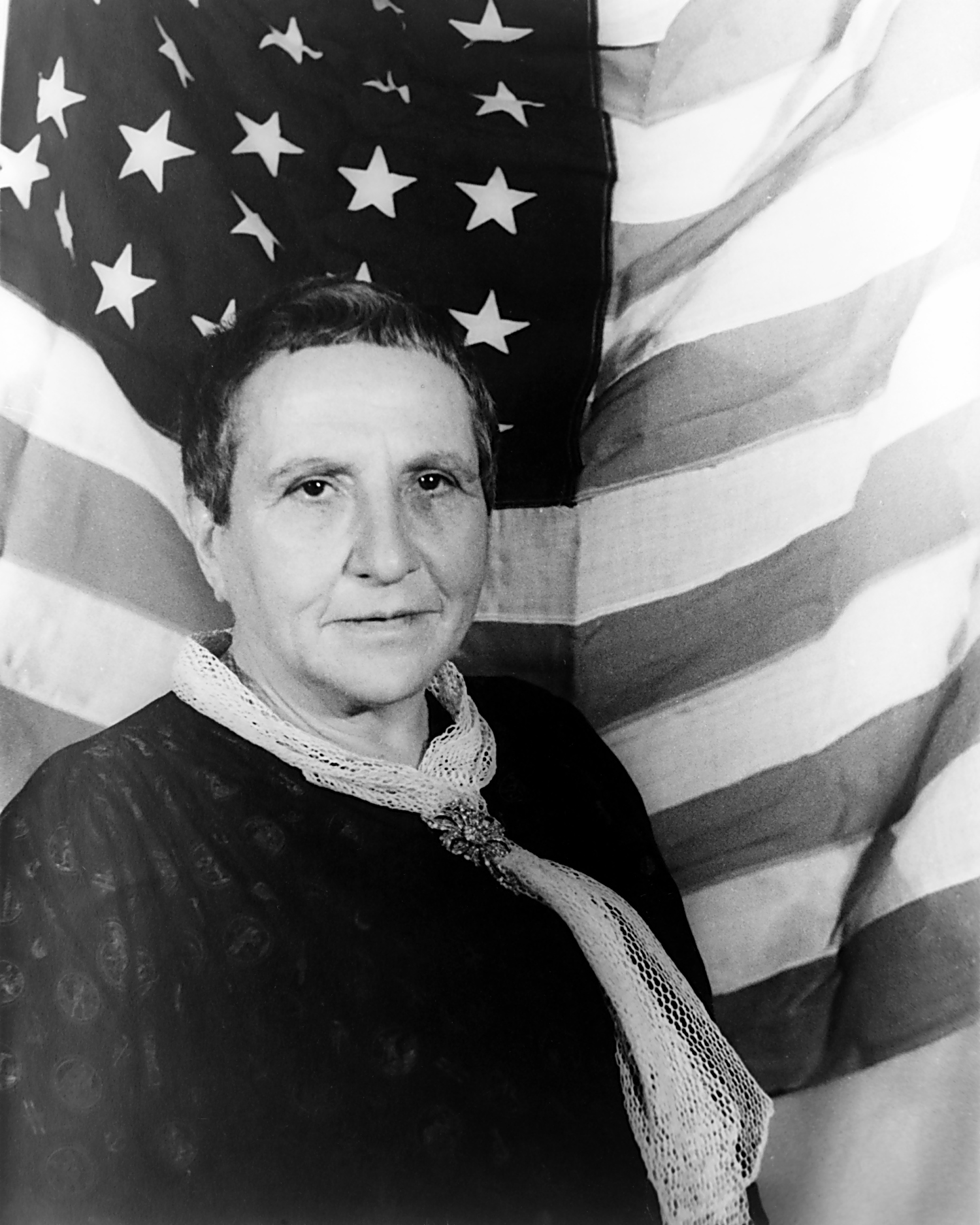
Portrait of Gertrude Stein, with American flag as backdrop Photo by Carl Van Vechten Wikimedia Commons
Gertrude Stein, a pioneering American novelist, poet, playwright, and art collector, was a key figure in early twentieth-century feminism – both literally and literarily – who rose to mainstream attention due to her ‘quirky’ lifestyle and modernist writing style.
She shaped an artistic movement that defied traditional norms of femininity, writing style, and form as an avant-garde advocate. Her experimental writing styles included the use of broken grammar and illogical writing flows in her 1914 novel Tender Buttons: Objects, Food, Room, as well as repetition to emphasize and reshape traditional concepts in later works such as The Making of Americans.
Despite being born in Pittsburgh, Pennsylvania, and raised in California, Stein moved to Paris, France as an adult and lived there for the rest of her life. During her time here, she hosted a salon in Paris where leading literary and artistic figures would meet and share their work. Pablo Picasso, Ernest Hemingway, and F. Scott Fitzgerald were among those who attended.
Her famous works are:
Three Lives (1909) – Divided into three separate stories, ‘The Good Anna,’ ‘Melanctha,’ and ‘The Gentle Lena,’ Three Lives’ follows three different lives of working-class women living in Baltimore.
Tender Buttons (1914) – Divided into three sections, ‘Objects,’ ‘Food,’ and ‘Rooms,’ the book contains poems about the mundane aspects of everyday life, while experimental language keeps the subjects unfamiliar and engaging.
The Making of Americans: Being a History of a Family’s Progress (1925) – A novel that follows the ancestry, history, and psychological development of two fictional families.
9. Virginia Woolf

Photograph of Virginia Woolf with hand on face wearing a fur stole Photo by Harvard Theater Collection, Houghton Library, Harvard University Wikimedia Commons
Adeline Virginia Woolf was an English writer who lived in the early twentieth century. She regarded as one of the most modernist authors of her time, not only challenged the social injustices faced by women in the early 1900s but also tested and incorporated various literary devices into our modern lexicon of creative writing.
For example, Virginia is regarded as a forerunner in the use of stream of consciousness as a narrative device, particularly in one of her most famous novels, A Room of One’s Own.
Woolf was born into an affluent family of eight, living in South Kensington, London, with her mother, father, and five siblings. She was home-schooled in English Classics and Victorian Literature before enrolling in King’s College London’s Ladies’ Department to study classics and history.
Famous works by Virginia Woolf include:
Mrs. Dalloway (1925) is a fictional high-society novel. Clarissa Dalloway, who lives in post-World War I England, recounts a day in her life.
To the Lighthouse (1927) – A philosophical introspection novel about the Ramsay family and their visits to the Scottish Isle of Skye between 1910 and 1920.
A Room of One’s Own (1929) – An extended essay based on two lectures Woolf gave about social injustices against women in October 1928 at Newnham College and Girton College (both constituent colleges of the University of Cambridge).
10. Toni Morrison

Toni Morrison, 1998 Photo by John Mathew Smith Wikimedia Commons
Toni Morrison was an American novelist and editor who was born and raised in Lorain, Ohio. She became famous for her ability to depict the Black American experience in her writing with such authenticity; in an unjust society, her characters typically struggle to find themselves and their cultural identity; and her use of poetic style and often fantastical writing style give her stories great strength and texture.
Toni established herself in the literary world after earning an MA in American Literature at Cornell University in the mid-to-late 1950s. In the late 1960s, she became the first black female editor in fiction at Random House in New York City. Her reputation as an author did not emerge until the 1970s and mid-1980s.
A phenomenally successful author, she has deservedly received numerous awards and accolades for her work. President Barack Obama awarded her the Presidential Medal of Freedom in 2012, and the Saul Bellow Award for Achievement in American Fiction in 2016, and Morrison was inducted into the National Women’s Hall of Fame in 2020.
Among her famous works include:
The Bluest Eye (1970) – Morrison’s first novel tells the story of a young African-American girl named Pecola growing up after the Great Depression.
Sula (1973) – Morrison’s second novel follows a young black girl named Sula as she grows up in a time of adversity and distrust, even hatred, within the black community in which she lives.
Beloved (1987) – Set after the American Civil War, Beloved tells the story of a group of former slaves whose home in Cincinnati is haunted by a malevolent spirit. The novel is based on an actual event that occurred in Kentucky in 1856, when an enslaved woman, Margaret Garner, escaped and fled to the free state of Ohio.
11. J. K. Rowling

J.K. Rowling reads from Harry Potter and the Sorcerer’s Stone Photo by Daniel Ogren Wikimedia Commons
Joanne Rowling OBE, better known by her pen name J. K. Rowling, is a British author, film producer, and screenwriter best known for writing the best-selling Harry Potter series.
Rowling came up with the idea for the Harry Potter series while sitting on a delayed train to London in 1990, after working as a researcher and secretary for Amnesty International. She worked on the first book draft for seven years, and it was rejected by twelve different publishers before being purchased by Barry Cunningham, who gave her the platform she needed to launch her fantastical book series.
Rowling is the best-selling living author in the United Kingdom, having won numerous awards and selling over 500 million copies of her works.
Famous works by J. K. Rowling include:
Harry Potter and the Philosopher’s Stone (1997) – The first book in the series; Harry is a wizard who lives with his non-magical (muggle) relatives until he is invited to Hogwarts School of Witchcraft and Wizardry on his eleventh birthday. Six sequels followed, chronicling Harry’s adventures at Hogwarts with friends Hermione and Ron, as well as his attempts to defeat Lord Voldemort, who murdered Harry’s parents when he was a child.
Rowling’s first book for adult readers, The Casual Vacancy (2012), is a mature murder mystery that explores complex themes such as class, politics, and adult social issues. The novel sold the most copies in the UK in three years and had the second best-selling opening week for a novel in three years.
12. Alice Walker

Alice Walker, reading and talking about “Why War is Never a Good Idea” Photo by Virginia DeBolt Wikimedia Commons
Despite the fact that all of the female writers on our list are accomplished in their own right, Alice Walker stands out as one of the most successful in female literary history.
For her novel The Color Purple, she became the first African-American woman to win the Pulitzer Prize for Fiction in 1982. Since then, she has received over 15 different awards for her fiction work and social activism, including the Global Exchange Domestic Human Rights Award (2007) and induction into both the Georgia Writers Hall of Fame (2001) and the California Hall of Fame for History, Women, and the Arts (2006).
Throughout her career, she has also published seventeen novels and short stories, twelve non-fiction works, and several collections of essays and poetry.
Her famous works are:
Meridian (1976)- described as Walker’s “meditation on the modern civil rights movement,” follows a young black woman in the late 1960s who is attending college at a time when the civil rights movement is becoming volatile.
The Color Purple (1982) – This epistolary novel follows the life of Celie, a poor, uneducated 14-year-old girl living in the early 1900s in the Southern United States, who tells her story in a series of letters to God.
Possessing the Secret of Joy (1992) – Tells the story of Tashi, a minor character from Walker’s previous novel, ‘The Color Purple.’ Now in the United States, we see her battling an internal conflict between her new culture and her heritage.
13. Octavia E. Butler

Octavia Estelle Butler signing a copy of Fledgling Photo by Nikolas Coukouma Wikimedia Commons
Octavia Estelle Butler, an American author, was an award-winning female writer who rose to prominence in the literary industry in the late 1970s after publishing a series of science fiction novels.
She was known for her sharp prose, strong protagonists, and social commentaries on society from the distant past to the distant future. She also frequently wrote on topics such as racial injustice, global warming, women’s rights, and political disparity.
Butler’s writing drew a great deal of attention, earning her multiple Hugo and Nebula awards, as well as the PEN West Lifetime Achievement Award. She was also the first science fiction writer to receive a MacArthur Fellowship in 1995. Many of her books are still popular among high school and college students today.
The following are her famous works:
Kindred (1979) – Incorporating time travel and slave narratives, the novel follows Dana, a young African-American woman writer who becomes trapped in time between her Los Angeles home in 1976 and a pre-Civil War Maryland plantation.
Parable of the Sower (1993) – This apocalyptic science fiction novel, a New York Times Notable Book of the Year, offers commentary on climate change and social inequality. It follows the main character, Lauren Olamina, on her quest for freedom.
Parable of the Talents (1998) – The novel, which won the Nebula Award for Best Novel, is comprised of journal entries written by Lauren Olamina (the previous protagonist in Parable of the Sower) and her husband Taylor Bankole after they established a new community called Acorn.
14. Zadie Smith

Zadie Smith announcing the five 2010 National Book Critics Circle finalists in fiction Photo by David Shankbone Wikimedia Commons
Sadie Adeline Smith is an English novelist, essayist, and short story writer who rose to prominence after her debut novel, White Teeth, became an international bestseller in 2000. This early success earned her a number of honors, including the James Tait Black Memorial Prize and the Betty Trask Award.
Smith’s subsequent writing style was influenced by White Teeth. Her novels, known for their eccentric characters, astute humor, and snappy dialogue, frequently deal with discussions about the treatment of race, religion, and cultural identity.
Her famous works are:
White Teeth (2000) – Smith’s debut novel focuses on the later lives of two wartime friends and their families in London and is centered on Britain’s relationship with immigrants from the British Commonwealth.
On Beauty (2005) – Smith’s third novel, which won the Women’s Prize for Fiction, tells the story of two families, each set in New England and London, with events triggered by the two protagonists’ long-standing professional rivalry.
Grand Union (2019) – A collection of 11 new and previously unpublished short stories, as well as excerpts from The New Yorker and other prestigious publications.
15. Margaret Atwood
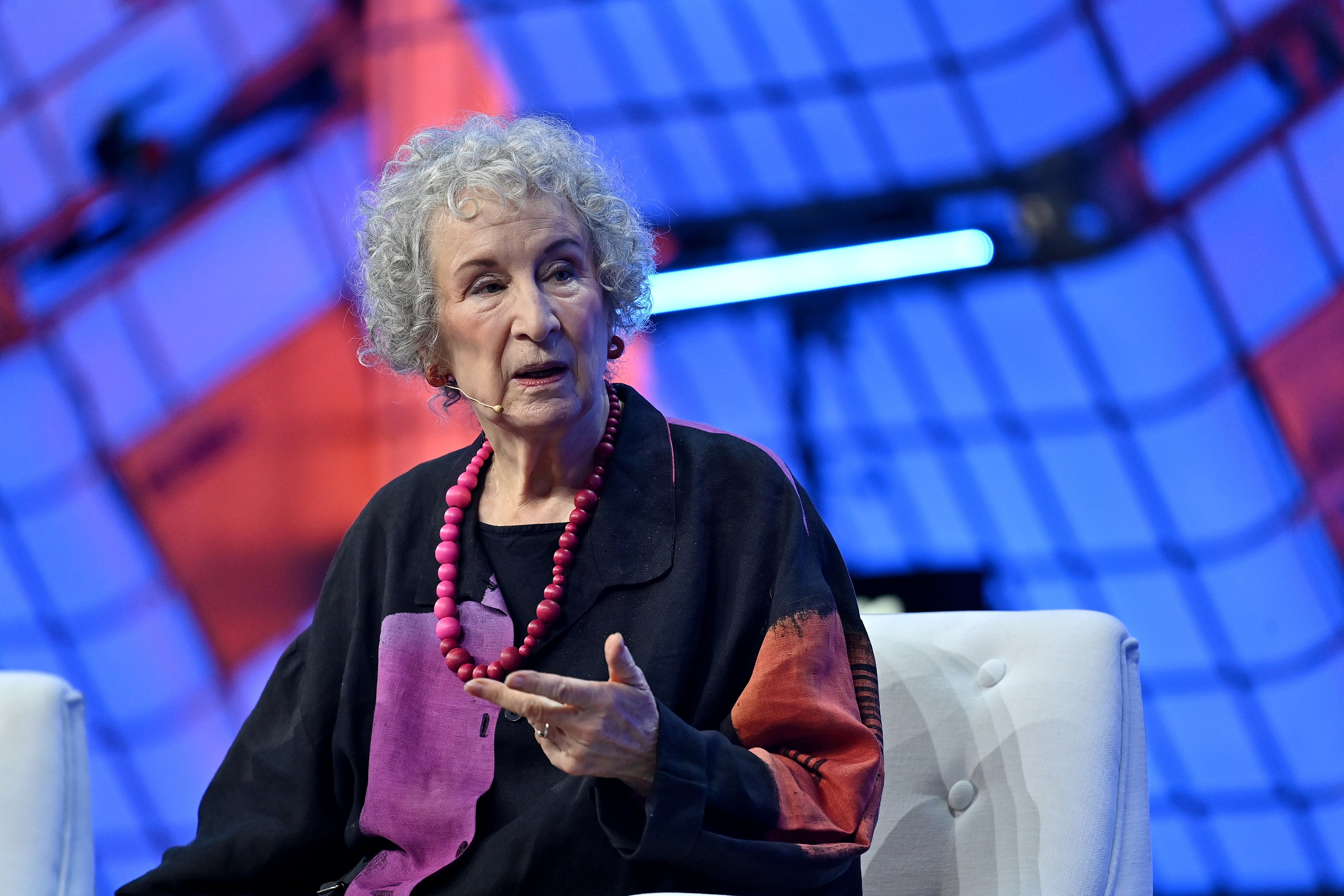
20 June 2022; Margaret Atwood, Author, during the opening night of Collision 2022 Photo by Collision Conf Wikimedia Commons
Margaret Atwood, a Canadian-born poet, and novelist is best known for writing the dystopian novel The Handmaid’s Tale in 1985, which went on to become a huge success, including a hit US TV series adaptation of the original book.
As a literary artist, Atwood addresses a wide range of issues that have persisted over time, including gender and identity, religion, climate change, ‘power politics,’ and the power of language. Her ability to combine these themes with a sharp literary tongue has made her a subject of study for many A-Level syllabi.
Among many other honors, Atwood has received two Booker Prizes, the Arthur C. Clarke Award, and the PEN Center USA Lifetime Achievement Awards for her writing.
Her works include:
The Handmaid’s Tale (1985), a dystopian novel set in a near-future New England in a strongly patriarchal, totalitarian state that has overthrown the United States government, is one of Margaret Atwood’s most famous works. Offred, the central character and narrator, is one of a group of ‘handmaids’ who are forced to bear children for the state’s ruling class of men.
Alias Grace (1996) – A historical fiction novel that retells the infamous 1843 murders of Thomas Kinnear and his housekeeper Nancy Montgomery in Canada, where two of the household servants were convicted of the crime.
The Testaments (2019) – A sequel to ‘The Handmaid’s Tale’ that takes place 15 years after the events of the first. Aunt Lydia, a character from the previous novel, narrates
16. Susan Sontag

Visual of the SheSaid campaign 2022 Photo by Afek91 Wikimedia Commons
Susan Sontag was born on January 16, 1933, in New York City, grew up in Tucson, Arizona, and attended high school in Los Angeles. She earned her B.A. from the University of Chicago College and pursued graduate studies in philosophy, literature, and theology at Harvard University and Saint Anne’s College, Oxford.
Her works include four novels, The Benefactor, Death Kit, The Volcano Lover, and In America, as well as a collection of short stories, I, etcetera; several plays, including Alice in Bed and Lady from the Sea; and nine works of nonfiction, beginning with Against Interpretation and including On Photography, Illness as Metaphor, Where the Stress Falls, Regarding the Pain of Others, and At the Same Time. In 1982, FSG published a Susan Sontag Reader.
Ms. Sontag wrote and directed four feature-length films: Duet for Cannibals (1969) and Brother Carl (1971) in Sweden, Promised Lands (1974) in Israel during the October 1973 war, and Unguided Tour (1983) in Italy, based on her short story of the same name. Her play Alice in Bed has been performed in the United States, Mexico, Germany, and the Netherlands. Lady from the Sea, another play, has been staged in Italy, France, Switzerland, Germany, and Korea.
Among Ms. Sontag’s many honors are the German Book Trade Peace Prize in 2003, the Prince of Asturias Prize in 2003, the Jerusalem Prize in 2001, the National Book Award for In America (2000), and the National Book Critics Circle Award for On Photography (1978). She was awarded the Malaparte Prize in Italy in 1992, and the French government named her a Commandeur de l’Ordre des Arts et des Lettres in 1999. (she had been named an Officier in the same order in 1984). She was a MacArthur Fellow from 1990 to 1995.
Ms. Sontag died on December 28, 2004, in New York City.
17. Donna Tartt
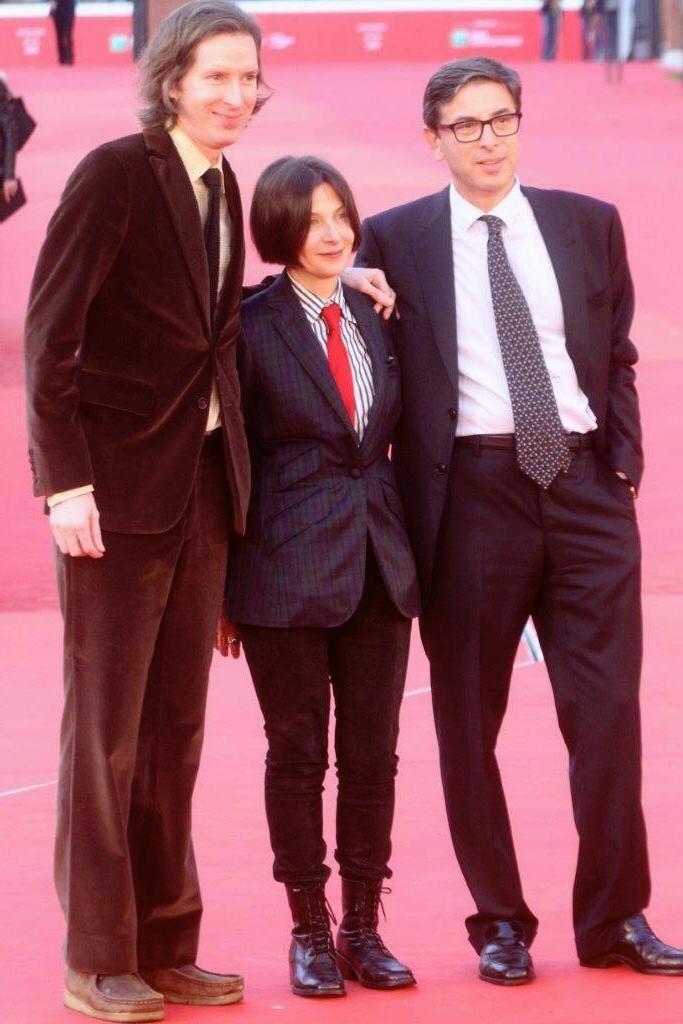
Wes Anderson, Donna Tartt Photo by Antonio Monda Wikimedia Commons
Donna Tartt is an American author whose first two novels, The Secret History, and The Little Friend, received critical acclaim and were translated into thirty languages. Tartt won the WH Smith Literary Award in 2003 for her novel The Little Friend. In 2014, her novel The Goldfinch was awarded the Pulitzer Prize.
She was born in Greenwood, Mississippi to Don and Taylor Tartt, but raised 32 miles away in Grenada, Mississippi. She wrote her first poem at the age of five, and at the age of thirteen, she was published in a Mississippi literary review.
The Secret History (1992), The Little Friend (2002), and The Goldfinch (2005) are Tartt’s novels (2013). Tartt’s first novel, The Secret History, was published in 1992. Her time at Bennington College inspired the book. Her agent was Amanda Urban, and the novel was a critical and financial success. Tartt, who was only 29 years old at the time, was dubbed a “precocious literary genius” by Vanity Fair. Tartt’s novel The Little Friend was first published in Dutch in 2002 because her books sold more per capita in the Netherlands than anywhere else.
Tartt’s short story “The Ambush” was included in the Best American Short Stories 2006 anthology.
Her 2013 novel The Goldfinch sparked debate among critics about whether it was a literary novel or a commercial success. The novel was adapted into the film The Goldfinch. Tartt was reportedly paid $3 million for the film rights, but she split with her long-term agent, Amanda Urban after the latter failed to secure Tartt a role in the screenplay writing or overall production. The film was a critical and commercial flop.
18. Chimamanda Ngozi Adichie
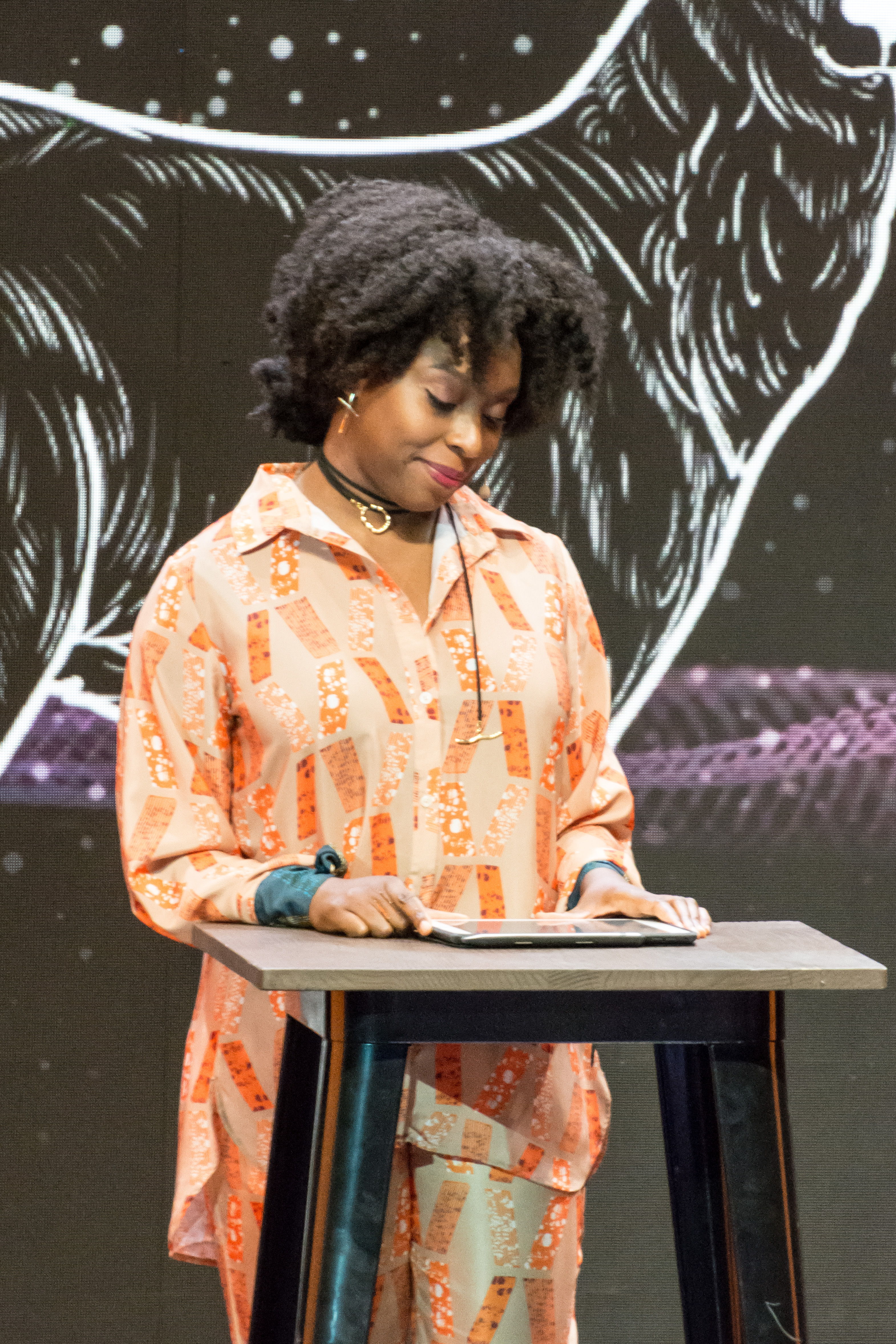
Chimamanda Ngozi Adichie at Congreso Futuro 2020 Photo by Carlos Figueroa Wikimedia Commons
Chimamanda Ngozi Adichie was born in 1977 in Enugu, Nigeria. Her father was a professor and her mother was the first female Registrar at the University of Nigeria, Nsukka, where she grew up. She studied medicine for a year in Nsukka before moving to the United States at the age of 19 to further her education in a different field. She earned a bachelor’s degree in communication and political science from Eastern Connecticut State University.
She holds a Master of Arts in African History from Yale University and a Master of Arts in Creative Writing from Johns Hopkins University. She received a Hodder fellowship at Princeton University for the 2005-2006 academic year, as well as a Radcliffe Institute of Harvard University for the 2011-2012 academic year. In 2008, she received a MacArthur Fellowship.
Purple Hibiscus, her first novel, won the Commonwealth Writers’ Prize in 2003, and Half of a Yellow Sun, her second novel, won the Orange Prize in 2006. Her novel Americanah, published in 2013, received the US National Book Critics Circle Award and was named one of The New York Times’ Top Ten Best Books of 2013.
She has given two landmark TED talks: The Danger of a Single Story in 2009 and We Should All Be Feminists in 2012, which sparked a global conversation about feminism and was published as a book in 2014. Dear Ijeawele: A Feminist Manifesto in Fifteen Suggestions was released in March of 2017. Notes On Grief, an essay about the death of her father, was published in 2021.
In 2015, TIME Magazine named her one of the 100 Most Influential People in the World. Fortune Magazine named her one of the World’s 50 Greatest Leaders in 2017. She is a member of the American Academy of Arts and Sciences as well as the American Academy of Arts and Letters.
19. George Eliot

George Eliot, replica by François D’Albert Durade Photo by National Portrait Gallery Wikimedia Commons
Mary Ann Evans wrote under the pen name George Eliot. She grew up in Warwickshire during a period when industrialization was transforming the landscape. Her mother died when she was 17, and she and her father moved to Coventry in 1841, which she used as inspiration for the fictional town of Middlemarch. There, she became involved with a group of free-thinking intellectuals and lost her Christian faith. She traveled abroad after her father died in 1849 before settling in London to work as an editor at the left-wing Westminster Review. This led to her meeting the philosopher and critic George Henry Lewes, who was married but divorced. In defiance of Victorian conventions, Eliot openly lived with Lewes and began referring to herself as Marian Lewes.
Lewes encouraged her to write fiction, which she did under a male pseudonym, partly to avoid having her work judged in light of her scandalous domestic situation. Her first Warwickshire-set stories, deeply influenced by Wordsworth’s poetry and contemporary genre painting, first appeared in Blackwood’s Magazine in 1857; they were published as Scenes From Clerical Life in 1858. Adam Bede was published in 1859, and The Mill on the Floss was published in 1860. In the following decade, she published three more novels, including Silas Marner (1861), as well as some poetry. Middlemarch, her most famous work, was published in eight installments from 1871 to 1872.
20. Emily Dickinson

Image of author Emily Dickinson Photo by Amherst College Wikimedia Commons
Emily Dickinson was born in Amherst, Massachusetts, on December 10, 1830. She only stayed at Mount Holyoke Female Seminary in South Hadley for a year. Her father, Edward Dickinson, was active in state and national politics, serving one term in Congress. Her brother, Austin, who attended law school and became an attorney, lived next door with his wife, Susan Gilbert. Dickinson’s younger sister, Lavinia, also lived at home, and she and Austin were Dickinson’s intellectual companions throughout her life.
Dickinson’s poetry was heavily influenced by seventeenth-century English Metaphysical poets, as well as her reading of the Book of Revelation and her upbringing in a Puritan New England town, which encouraged a Calvinist, orthodox, and conservative approach to Christianity. She admired Robert and Elizabeth Barrett Browning’s poetry, as well as John Keats’. Though she was discouraged from reading her contemporary Walt Whitman’s verse due to rumors of its disgracefulness, the two poets are now linked by their distinguished place as the founders of a uniquely American poetic voice. While Dickinson was prolific and frequently enclosed poems in letters to friends, she was largely unknown during her lifetime. The first volume of her work was published posthumously in 1890 and the last in 1955. She died in Amherst in 1886.

 English
English








